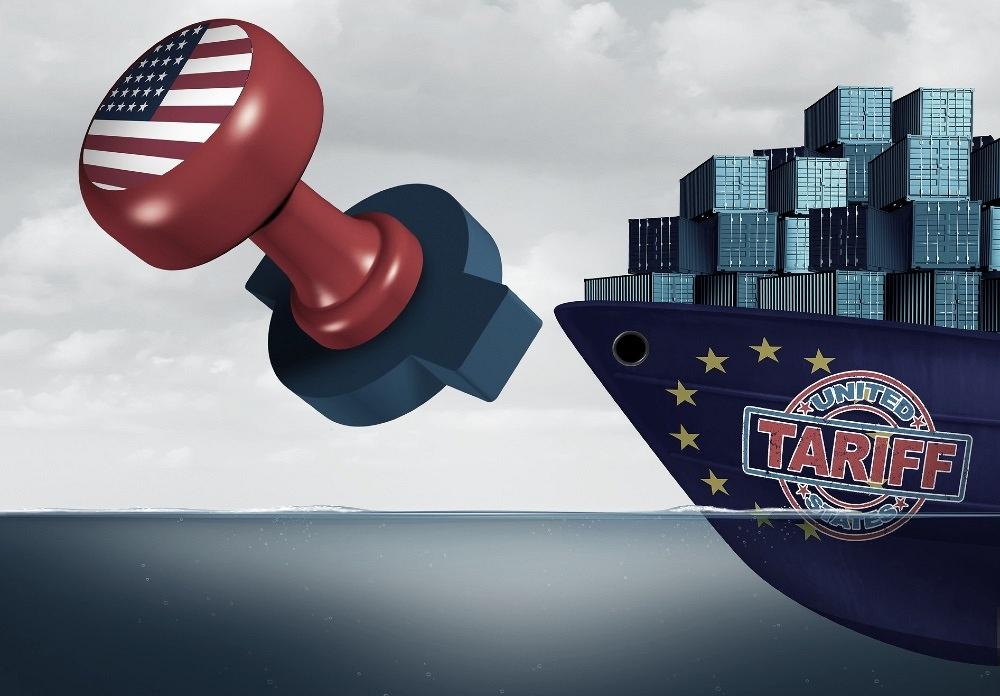A decision by the US and the EU to replace the Section 232 tariffs on European steel and aluminum imports with a tariff-rate quota was met with mixed market reaction. Domestic buyers feared another surge in domestic steel prices, while European steel producers look to increase export prices to the US, sources told S&P Global Platts Nov. 1.
The initiation of a tariff-rate quota system will allow for lower levies on metals exports between the US and the EU up to a certain amount. Former US President Donald Trump had initiated a 25% steel tariff and 10% aluminum tariff on metal imports from most countries under Section 232 of the Trade Expansion Act in March 2018.
European mills were optimistic about the tariff decision, as it would allow them to export to the US overseas market, which has a Eur600/mt ($695.48/mt) premium over ex-works Ruhr HRC prices.
The daily Platts TSI US HRC index was assessed unchanged at $1,890/st on an ex-works Indiana basis Oct. 29, with the European HRC index was also stable at Eur1,020/mt ex-works Ruhr.
Eurofer welcomed the move by the EU and the US to replace US Section 232’s 25% duty on EU steel imports, the European Steel Association said on Nov. 1.
“This step forward on Section 232 is a positive signal after the EU-US frictions over the past years. It prevents a further escalation in the trade dispute between the two blocks by avoiding the doubling of the EU tariffs on US goods otherwise kicking in on Dec. 1, 2021,” said Axel Eggert, director general of the European Steel Association.
Eggert underlined it was important for EU steel exporters to the US that the new Tariff Rate Quota system would take into account traditional EU export levels within a stable framework, and that the product exemptions for EU steelmakers already in place would be maintained or renewed.
EU market reacts
“I think the mills are happy with this; they now have a new market outlet to sell into with very high prices,” a Benelux buyer told Platts. “But when there is more material flooding into America, it will then bring pressure to their market.”
There remained some concerns of rising European prices and demand viability, with the market in a wait-and-see mode.
“I am worried about higher domestic prices, but there also needs to be decent demand, and we cannot say that for now,” the buyer said.
Uncertainty still loomed about the specific terms of the tariff-rate quota, and what it could mean for countries exporting to the US.
A Turkish longs trader said market sentiment would depend on the details of US quotas covering EU-origin imports and how it would affect EU safeguard quotas for Turkey and other countries.
“Demand is very slow, and news of a deal brokered between the EU and the US is not helping the sentiment here either,” the trader said. “Europe now has the chance to sell into the US, tariff-free under the quota arrangement, which is bad for Turkish suppliers who will continue to face 25% antidumping duty in case the imported volumes exceed assigned country-specific quotas.”
Meanwhile, European aluminum participants were skeptical about the impact of the tariff revisions.
The deal stipulates that for European aluminum, 366,000 mt of semi-finished product and 18,000 mt of primary aluminum could be imported tariff-free by the US.
“The bottom line is it’s very early stages, there are not enough details. You might see demand for unpaid [duty] go up if the ability to ship goods to America is easier,” a European trader said. “If it’s semi-finished products going to the US then that’s an increase in unpaid demand.”
One Swiss-based trader highlighted the limited financial gain offered by the new tariffs. “It’s only 18,000 mt of primary for the whole year, which in the grand scheme of things is not a lot at all. The main effect is going to be on the futures curve in the US,” he said.
Deal could impact short-term pricing in US
The trade deal came at a time when US sheet pricing was already showing signs of weakness. The daily Platts TSI US HRC index peaked around $1,960/st in September and moved sideways until mid-October. Since then, the price has started moving lower and was assessed on Oct. 29 at $1,890/st on an ex-works Indiana basis.
With wider supply availability and rising inventory levels, prices were already under pressure and some market sources saw the trade deal as another threat for short-term pricing in the US. Moreover, buyers with easy access to major ports would use competitively priced EU product as leverage to achieve better terms in their ongoing contract negotiations with domestic mills.
“Europe is getting ready to ship some tons,” an end-user said. “I do not think it will be a game changer, but East Coast buyers will have another option [and] can move some of their books from domestic mills.”
At least one European mill was testing the market with index-linked deals to see buying interest, according to the end-user.
Some US-based traders had already positioned themselves ahead of the trade deal, offering terms that would refund a significant portion of tariffs back to buyer if they are waived by the arrival of the ordered product.
A service center source said that all his recent purchase agreements stated that he would receive the whole tariff amount in case of any change in rules.
— Staff






